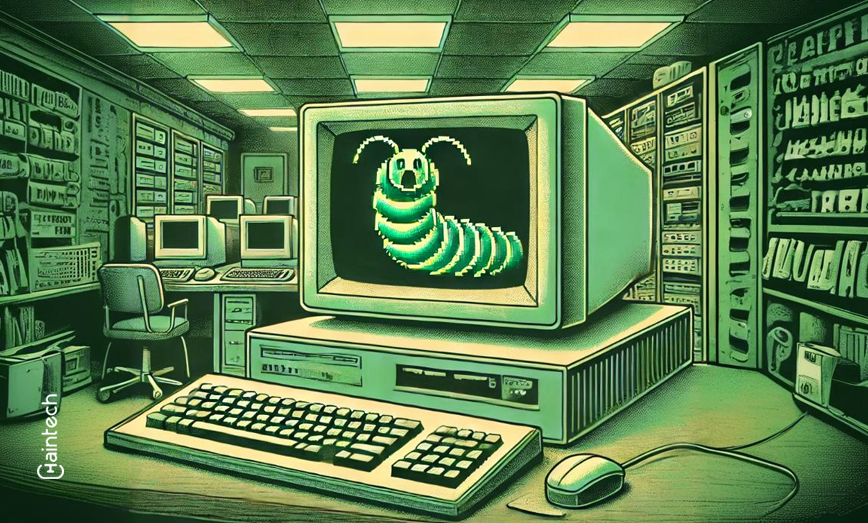1988 – The Morris Worm Incident: A Turning Point in Cybersecurity History

Imagine one day logging into your computer, expecting everything to run smoothly, but instead, it’s slow or unresponsive. In 1988, that happened to thousands of computers when a small piece of code brought them all to their knees. Robert T. Morris, a graduate student at Cornell, wrote a worm that accidentally became one of the first major cyber incidents in history.
This worm shifted the balance of the threat equation in favor of the target, making compromise more of an effort on the attacker’s part. This, in turn, caused those parties to implement firewalls, better passwords, and timely patches.
It is time to turn to the facts of the Worm of Morris, what it was, how it occurred, and why it is important.
And it was Morris’s worm that led to the first successful prosecution of a person for sketchy skeptical methods under the Computer Fraud and Abuse Act of law.
Wake-Up Call for Cybersecurity: Security Takes Center Stage
- Before the Morris Worm, the internet was a friendly place. The worm showed everyone that even trusted networks had weak spots.
- Morris’s worm led to the first conviction under the Computer Fraud and Abuse Act, making it a landmark case in cyber law.
- The worm pushed companies and people to take security seriously, with firewalls, better passwords, and regular updates.
Let’s go deep into the nitty grittiness of the Morris Worm, how it happened, and why it still matters today.
The Story of the Morris Worm: How It All Began
The beginning of the Morris Worm brings us to the main protagonist, Robert T. Morris, a 23-year-old college student studying at Cornell University. Morris grew up in the eyes of computers and was more of a vandal. In 1988, he created a worm to find out how many machines could connect to the network.
Things took a not-so-good twist very soon. The Internet in 1988 was nothing close to the worldwide, widespread, encrypted web we can appreciate today. In those days, it consisted of about 100,000 interrelated information—mostly university and governmental computers that were technologically sweet.
The Morris Worm incident is viewed as one of the many turning points in the evolution of cybersecurity. It demonstrated the inherent weaknesses in early internet systems and how everybody knew that security was an issue. The worm’s problem is irrelevant. However, his experience continues to influence cybersecurity processes.
However, Morris added a small tweak—after seven checks, the worm would still copy itself, even if it got a “yes.” This tiny flaw caused the worm to reinfect computers repeatedly, overwhelming them. Suddenly, computers everywhere were crashing or crawling at a snail’s pace.
| Propagation Method | Details |
| Exploited Unix Vulnerabilities | Targeted weaknesses in Unix systems, including those from Sun Microsystems and DEC. |
| Buffer Overflow in Fingerd | A flaw in the finger daemon allowed the worm to execute its code on target machines. |
| Password Guessing | Tried weak and common passwords to gain access to systems. |
| Sendmail Bug Exploitation | Used a known bug in the send mail program to spread the worm further. |
| Reinfections Due to Coding Error | Even if a system was already infected, the worm would still attack, causing slowdowns. |
The impact was immediate and widespread. What started as an experiment showing security gaps became a full-blown crisis.
Implications and Analysis: Lessons from the Morris Worm
The Morris Worm incident didn’t just slow down computers; it woke up an entire generation to the dangers of the internet. Morris’s worm infected around 6,000 machines, roughly 10% of the internet back then. Universities, government offices, and other institutions were hit hard, and the worm’s effects were felt nationwide.
Key Implications:
- Widespread Panic and Disruption: Administrators scrambled to find solutions, often shutting down networks completely. This was a major disruption that caused a lot of frustration and lost time.
- A New Awareness of Cybersecurity: Many saw the internet as safe before the Morris Worm. The worm showed that even trusted systems could be vulnerable. This shifted how people thought about online safety, pushing for stronger protections like firewalls and better passwords.
- Legal Consequences: Morris never intended to inflict harm. He was caught committing several criminal acts, and the law finally caught him. He turned out to be the first person convicted in the USA for violating the Computer Fraud and Abuse Act. He got his punishment which was partly probation, community service, and financial compensation.. This established a legal framework concerning the prosecution of computer-based offenses.
- An Evolution in the Implementation of Cyber Security Measures: The Morris Worm called attention to the importance of regular software updates, having a good password, and executing proper security protocols. Companies began to invest in these measures to prevent similar incidents from occurring again.
Did You Know?
The Morris Worm was the first to get widespread media attention, making cybersecurity a topic of public discussion for the first time.
Impact: The Immediate and Lasting Effects
The Morris Worm had both immediate and long-lasting effects. For the first time in history, the general public saw computers as so vulnerable that they even attracted broad media coverage of the incident.
People were shocked to learn that one small program could cause much trouble.
Some of the immediate effects included:
- System Downtime: Many institutions had to completely shut down their systems to prevent the worm from spreading, significantly disrupting their operations.
- High Recovery Costs: While Morris didn’t profit from his actions, the recovery cost was high. Organizations had to spend time and money fixing the problem and implementing better protections.
- Increased Security Awareness: The worm puts cybersecurity on everyone’s radar. The internet clearly needs stronger defenses against such attacks.
- Public Awareness: The incident made headlines; for many, it was the first time they heard about internet security. It made people more cautious about how they used technology.
Remediations: How We Fixed the Damage
The Morris Worm forced a rapid response from the tech community. Experts worked together to patch vulnerabilities and strengthen defenses. Here’s how they responded:
- Patch Development: Developers quickly created patches to close the gaps that the worm had exploited. These updates were essential in stopping the worm and preventing similar attacks.
- Better Security Practices: The worm showed that strong security practices were necessary. Regular updates, strong passwords, and routine system checks became the new standard.
- Increased Awareness and Education: The incident pushed for better education on cybersecurity, both for IT professionals and everyday users. People needed to understand the risks to avoid falling victim to similar attacks.
Did You Know?
Morris’s father was a chief scientist at the NSA, making his involvement in a major cyber incident ironic.
Lessons Learned from the Morris Worm Incident
The Morris Worm incident taught us a lot about the importance of cybersecurity. Here are some key lessons:
- Trust Isn’t Enough: The Internet was built on trust in 1988, but the worm showed that this wasn’t enough. Systems need to be secure, not just connected.
- Regular Security Audits Are Critical: The worm exploited known vulnerabilities that hadn’t been patched. Regular audits could have prevented the spread by catching these flaws earlier.
- Ethical Hacking Matters: Morris’s intentions weren’t malicious, but his actions showed the importance of ethical hacking—finding flaws so they can be fixed before someone else exploits them.
Final Thoughts
The Morris Worm incident is a defining moment in the history of cybersecurity. It exposed how fragile early internet systems were and forced everyone to take security seriously. While the worm itself is no longer a threat, the lessons it taught continue to shape our approach to cybersecurity today.
People started discussing Internet security more, and the tech industry began building firewalls, and delivering patches and routine updates. Overall, people have become more careful on the Internet. The Morris Worm was arguably a practical joke, but it made other people envision how safe the net could one day be.
FAQs
1. What was the Morris Worm, and why is it worth mentioning?
Morris Worm, created in 1988, was probably the first computer worm that really knew how to spread and how insecure these interconnected systems were—shocking for the time. It was to die for.
2. How could the Morris Worm propagate?
The worm took advantage of vulnerabilities in Unix systems and broke into the hosts using passwords and other methods, such as the networked program sendmail.
3. What did Robert Morris want to achieve with the worm?
The main goal of Morris’s worm was to draw attention to the problems in the system – unfortunately, due to a flaw, a self-replicating worm was released in far more numbers than he had anticipated.
4. What was the Morris Worm’s contribution to the development of cyber security?
It made people no longer underestimate and ignore even the smallest security measures, allowing for the invention of firewalls, stronger passwords, and updated programs.
5. Where does the Morris Worm stand about the development of cybersecurity?
It has taught how to protect networks and formed the basis for many of the measures employed to protect against cyber crimes today.









